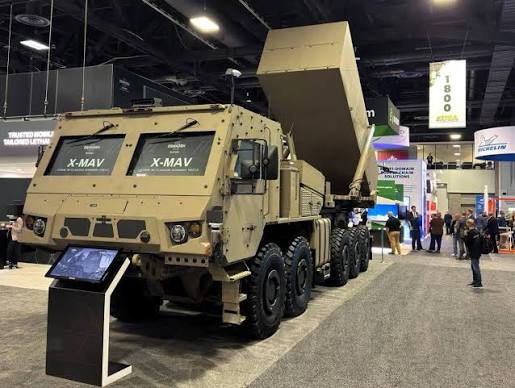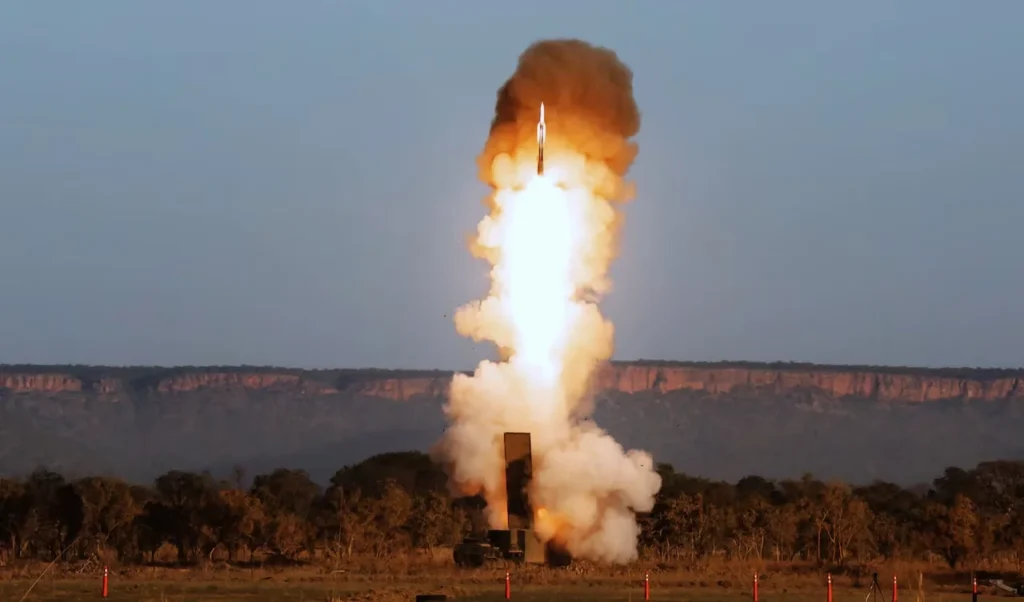Expert refutes claims that there is no possibility to launch Tomahawk from the territory of Ukraine
20 October 19:56 ANALYSIS FROM
ANALYSIS FROM The Tomahawk is a symbol of American power that could be a game changer for Ukraine. These cruise missiles are capable of hitting targets hundreds or even thousands of kilometers away, effectively reaching Russia’s deepest reaches. This is a nightmare for Moscow, as it has almost no effective means of countering Tomahawk.
However, a key question arises: will Ukraine be able to launch these missiles from its territory on its own? What technical steps need to be taken, how long will it take to train specialists, and why could the participation of American operators turn from a technical nuance into a political scandal? Read more in the article
The Tomahawk is not only a precision weapon, but also a political symbol. This is not what aviation expert Kostyantyn Kryvolap emphasizes in his exclusive commentary
The Tomahawk is a symbolic missile. It has always been the personification of American power. Back during the Cold War, the Americans used to say: we have Pershing, which are ballistic missiles, and we have Tomahawk. It was these missiles that showed that the United States could act accurately and stealthily.
According to the expert, back then Tomahawk was associated with the US ability to conduct precision strikes at long range, particularly at low altitude, bypassing enemy air defense systems
The Tomahawk is able to quietly, at low altitude, sneak up on a target and hit it. And if necessary, it can even deliver a nuclear charge,” says Kryvolap.
Realistic timeline: at least two months
Kryvolap believes that to launch Tomahawk from the territory of Ukraine, first of all, time is needed for training
“To launch Tomahawk from Ukrainian territory, it will take at least three to four months to train our specialists and transfer all the technologies,” says Kryvolap.
The expert clarifies that if the training is conducted by military personnel who have already worked with modern Western systems, the process will be faster.
If specialists who have already been trained on Patriot or HIMARS join the training, it will be much easier for them to master Tomahawk,” Kryvolap said.
At the same time, Kryvolap emphasizes that Ukraine has never had such an experience in training.
“We do not have any precedents like this yet. We can only focus on the training that the Ukrainian military received for Patriot and HIMARS.
Even in the best-case scenario, the expert said, it is impossible to accelerate training below a certain point.
In the best case, it is two months, eight weeks. Anything less is simply unrealistic. The optimal period is three to four months, and this is for very experienced operators,” Kryvolap said.
Thus, for Ukraine to be able to launch Tomahawk on its own, it needs not only equipment, but also time, people, and deep technical integration.
Autonomous launchers for Tomahawk were shown at AUSA 2025: why it is important for Ukraine
At the AUSA 2025 exhibition in Washington, D.C., defense manufacturers demonstrated several projects of autonomous ground launchers that could potentially launch Tomahawk cruise missiles. Among the most notable are the modular DeepFires project (a joint initiative of Raytheon, Forterra, and Oshkosh) and the FMAV/X-MAV series platforms from Oshkosh Defense.
DeepFires is positioned as a modular mobile strike system with support for autonomous or mixed control. According to the developers, DeepFires is considered a universal platform – from containers with Tomahawk missiles to containers for air defense systems (for example, Patriot) – but separate radars and fire control systems are required to operate air defense systems.

DeepFires is designed so that the platforms can operate both autonomously and as a “chain” under the control of one crew: an operator can control from one to six vehicles, they can move along a route or follow a lead vehicle. The project is also positioned as “relatively independent of communications,” using various networks and satellite communications for control.
The land-based mobile launchers that Tomahawk can launch are changing the way cruise missiles can be used in conflict: they allow strikes from deep inside a partner’s territory without the need for ships or submarines. This has many implications for strategic deterrence and operational planning, particularly for Ukraine, which is seeking to expand its long-range strike capabilities. The demonstrative developments at AUSA emphasize that the industry is actively working to reduce the size, increase the autonomy and mobility of Tomahawk carriers.
However, the availability of platforms is only part of the challenge. Their effective use requires: the supply of missiles, training of operators, communication and data exchange, integration with intelligence and targeting systems, as well as political decisions on the transfer and use of such means.

The political factor: Americans at the launchers are a signal to Moscow
In addition to technical training, there is also a political component. Kryvolap warns that the participation of American specialists in the launch process could be perceived as direct US involvement in the war:
“If the Americans themselves are involved in these processes – standing nearby and pressing buttons – then the Russians may see this as US interference in the war,” says Kryvolap.
According to the expert, such a scenario is currently unlikely:
“I think it will happen someday, but it’s not realistic right now,” Kryvolap said.
“So, the launch of Tomahawk from the territory of Ukraine is quite possible in the future, but there are several stages to go through before that:
- Prepare the personnel. Training of operators and technicians is a key condition.
- Transfer technology. It is necessary to obtain a full set of technical documentation and software.
- Provide the infrastructure. Communication systems, logistics, security, and command centers must be ready.
- Consider the political balance. The participation of American specialists or excessive publicity of the project may create new challenges at the diplomatic level.
Aviation expert Kostyantyn Kryvolap is convinced that Ukraine is technologically capable of mastering the Tomahawk, but it will take time, training, and political caution.
“A Tomahawk from Ukraine is technically possible, but not now. It will take at least several months to prepare. Only then will we be able to talk about real capabilities.
Technically, the launch of Tomahawk from Ukraine is possible, but not quickly: months of training, missile supplies, infrastructure (radar, communications, targeting), and full technology transfer are needed. The emergence of autonomous launchers such as DeepFires and X-MAV brings this possibility closer, but direct involvement of foreign operators could lead to political escalation. So, there are prospects, but implementation will require time and caution.
Read us on Telegram: important topics – without censorship









